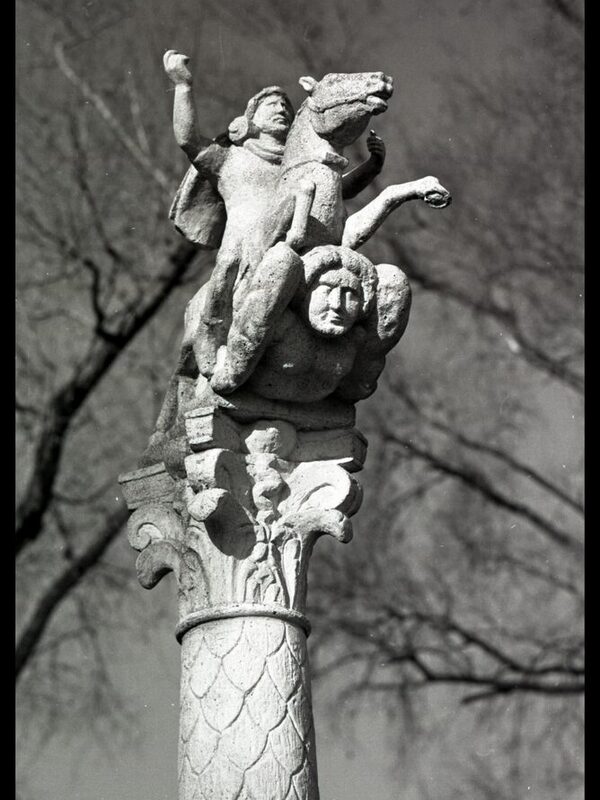Jupiter giant columns
The Jupiter Giant Columns have been typical monuments in the provinces of Upper Germania and Gallia Belgica in the north-west of the Roman Empire since the middle of the 2nd century AD. They can be found in a wide variety of places such as sanctuaries, streets or on private property. The monuments, consisting of a four-god stone, sometimes with a dedicatory inscription by the donor, an intermediate base and a column shaft, are usually crowned by the (eponymous) group of statues in which Jupiter rides down a giant lying on the ground. A conclusive interpretation of the columns, which combine Roman and indigenous components and are considered to be modeled on the Great Jupiter Column from Mainz, is still not possible due to a lack of written sources. According to the dedicatory inscription on the pedestal, the Jupiter Giant Column found in Wiesbaden-Schierstein was donated on February 28, 221 AD by the veteran Viccius Seneca on "his own land" of his estate (fundus). He had served with the 22nd Legion Primigenia stationed in Mainz, whose second epithet "Antoniniana", referring to Emperor Elagabal, had been erased in the inscription after Elagabal's assassination in Mainz.
The gods Minerva (with helmet, shield and spear) and Mercury (with purse and billy goat) depicted on the other sides of the pedestal together with the popular hero Hercules (recognizable by his lion's skin and club) correspond to the preferred and therefore "canonical" sequence. An undecorated column drum, on which the traces of the stone block clamped in a turning device for grinding are clearly visible, supports the scaled column shaft, whose oppositely aligned leaf tips meet at a bulge in the lower third of the shaft. It ends in a richly decorated flower capital. The crowning group of statues shows the highest Roman god leaping over a giant lying belly-down under his horse. The bearded Jupiter is depicted in the costume of a Roman general, with the cloak billowing behind his shoulders and the horse's wide front hooves emphasizing the impression of galloping forward. In contrast, the bearded, unclothed giant, who also serves as a support for the horse figure, appears oversized. Numerous details of the statue group in particular could previously be clearly seen even by the viewer standing on the ground thanks to the colorful setting of the 2.83 m high column.
Only the crowning sculpture of an enthroned Jupiter has survived from another column from Wiesbaden-Igstadt, which was probably also erected in a manor. The bearded god has wrapped his cloak around his abdomen and is holding the bundle of lightning in his lost right hand and a sceptre in his raised left. The naked torso is just as powerfully modeled as the luxuriantly waving hair and beard. The carefully rendered decoration of the throne, such as the dolphins arranged opposite each other above a shell on the backrest, is based on wooden armchairs with rich ivory ornamentation.
Literature
Bauchhenss, G.: Jupiter giant columns. In: Reallexikon der Germanischen Altertumskunde, 2nd ed., vol. 16, Berlin, New York 2000 [p. 132 ff.] (with further reading).
